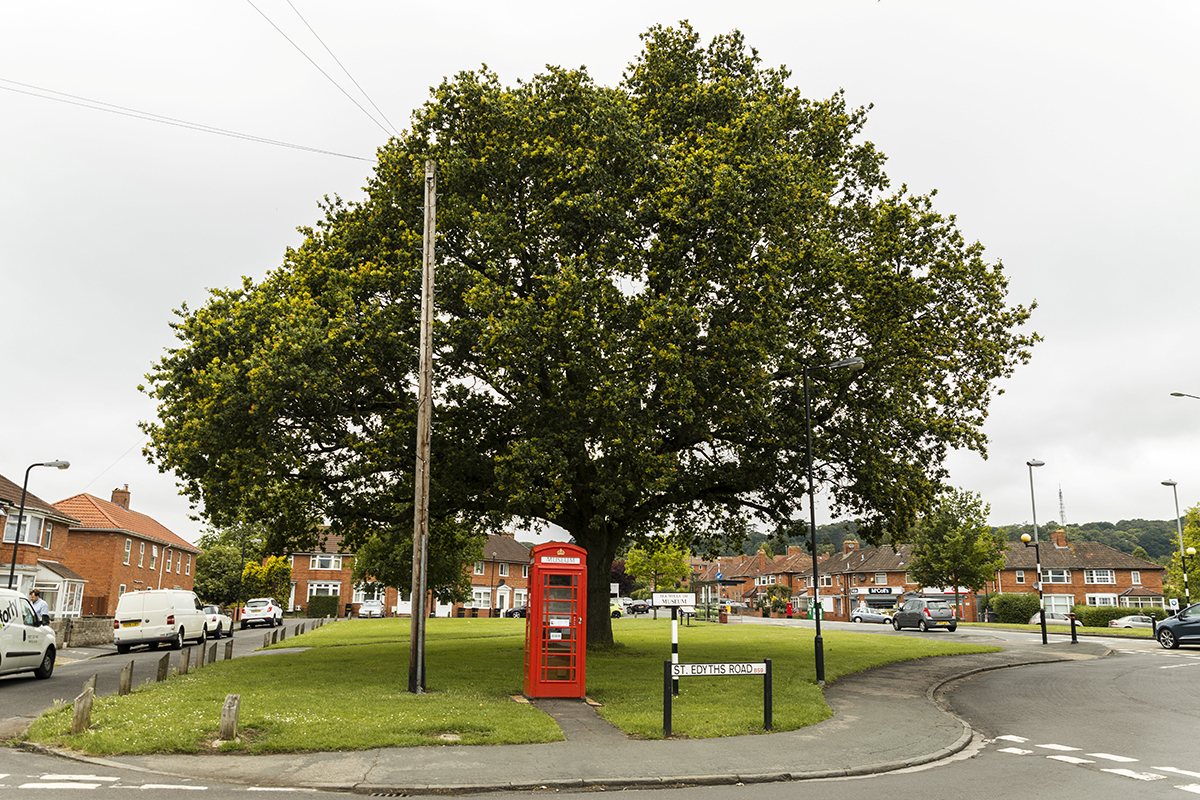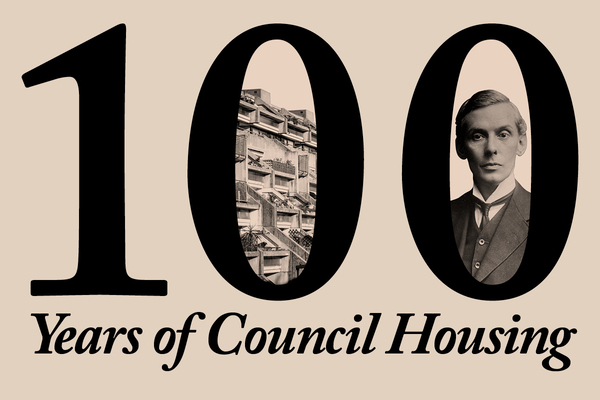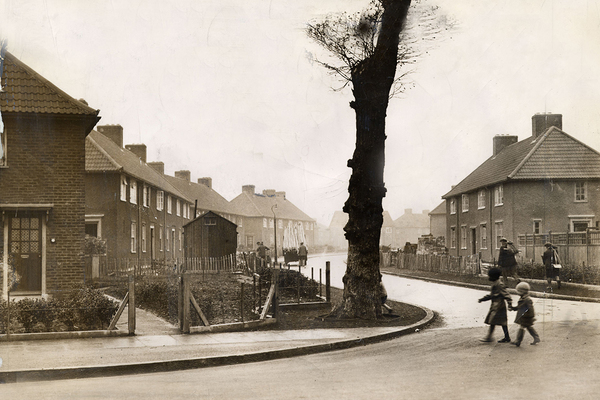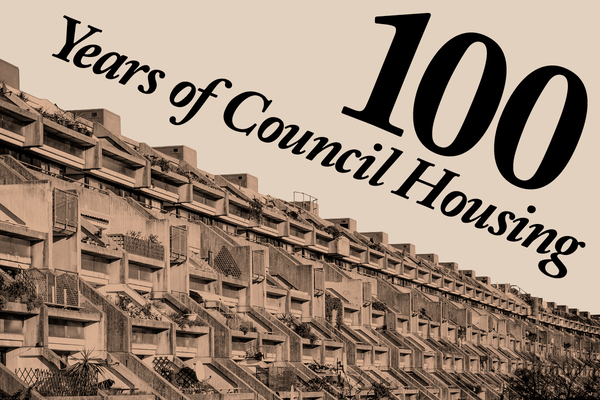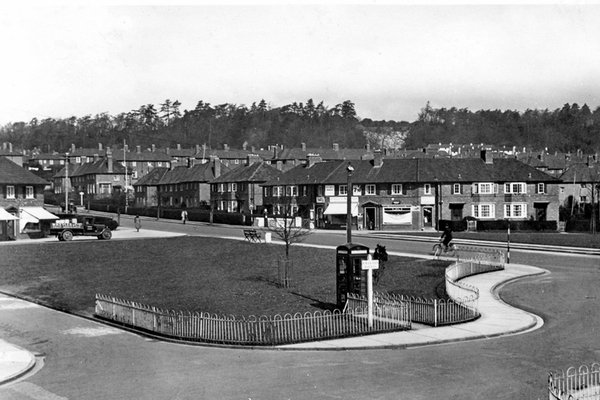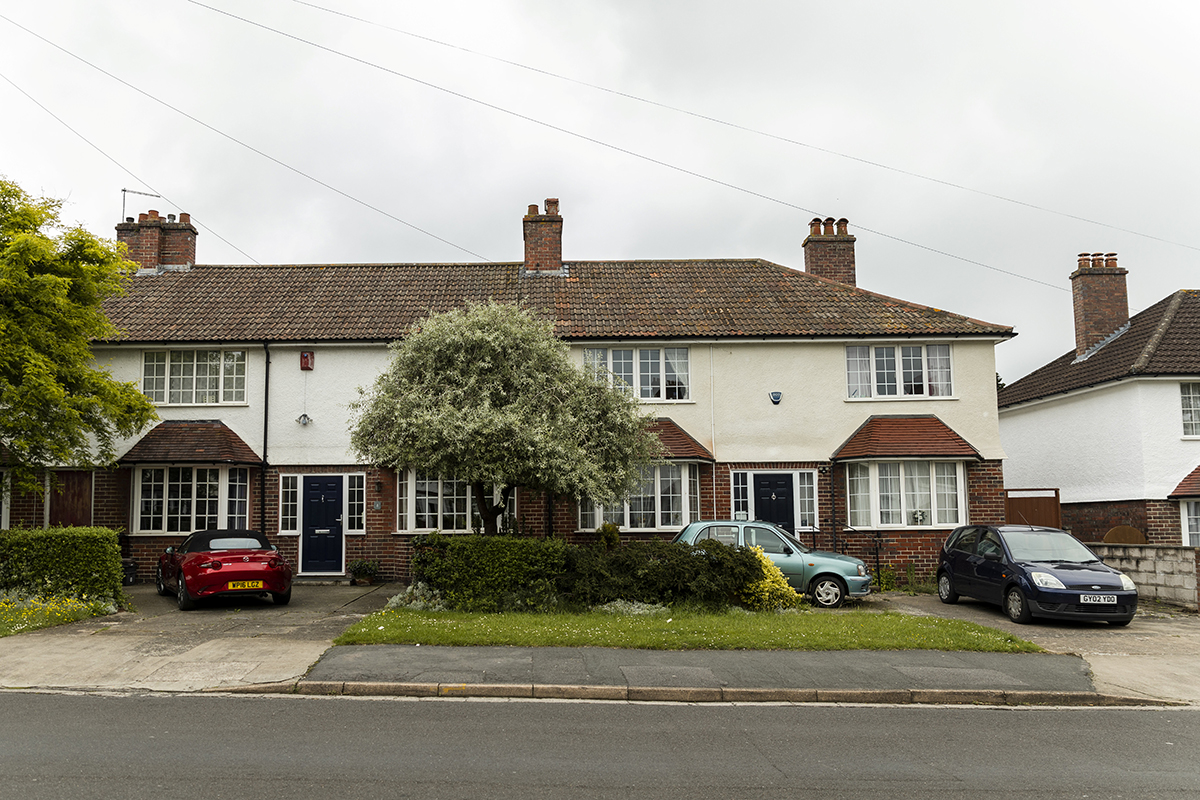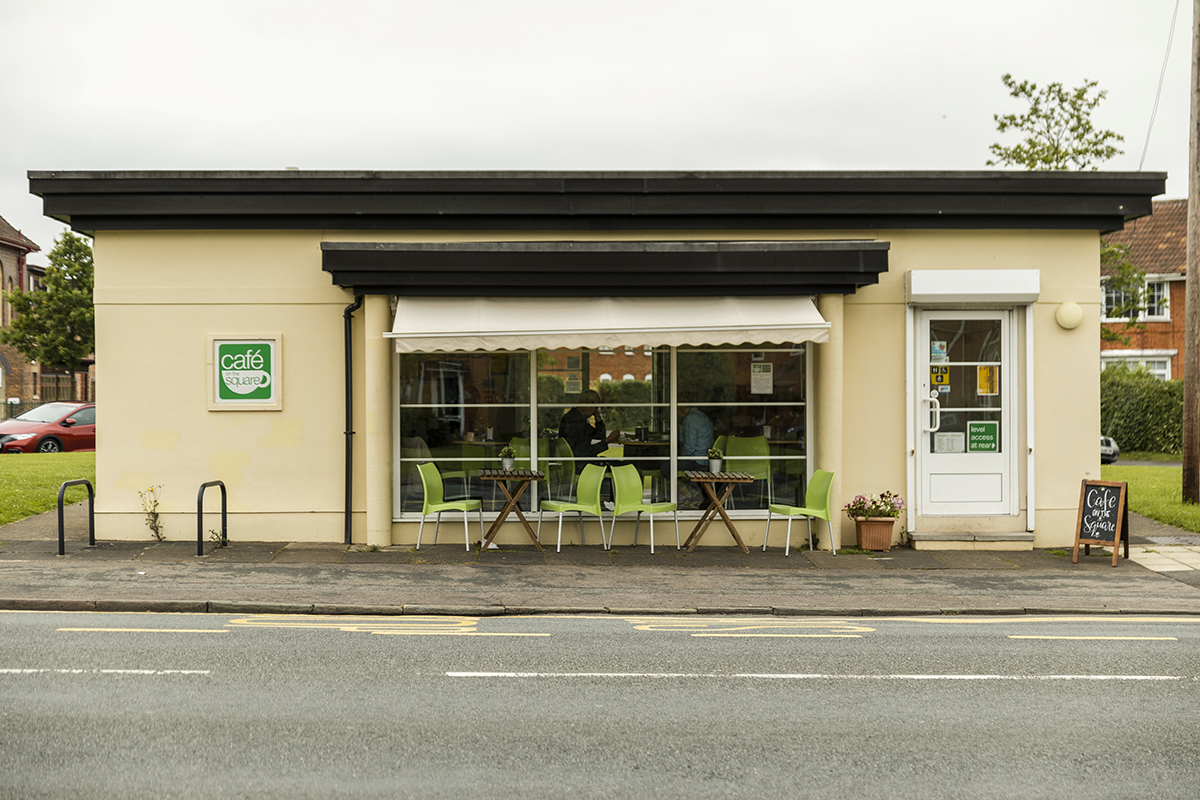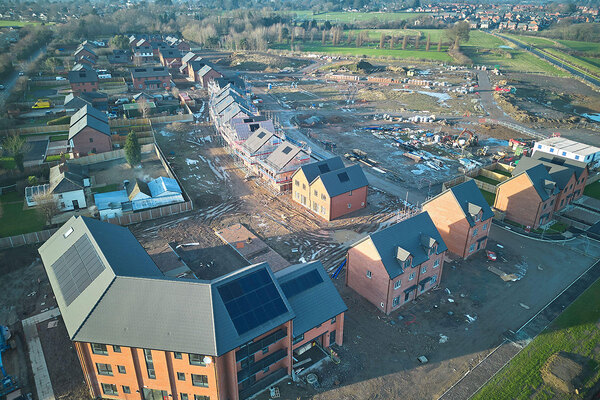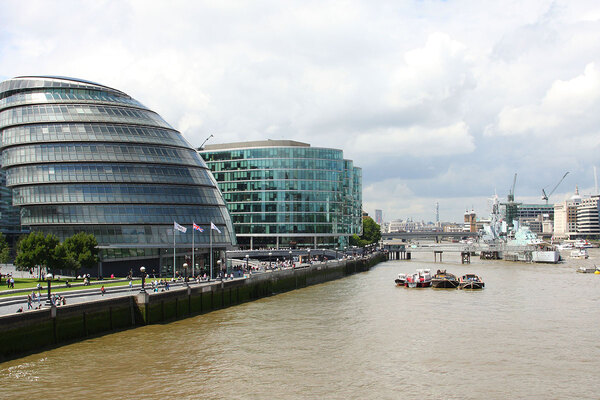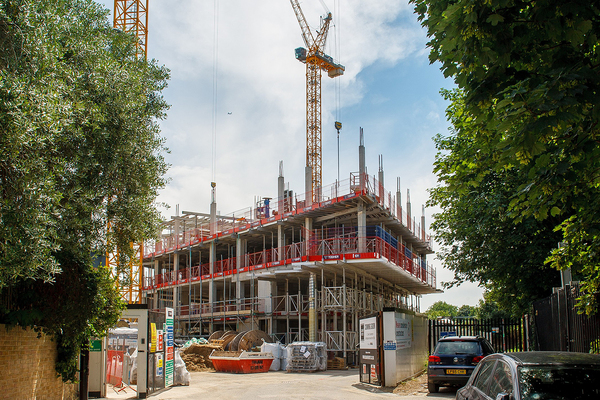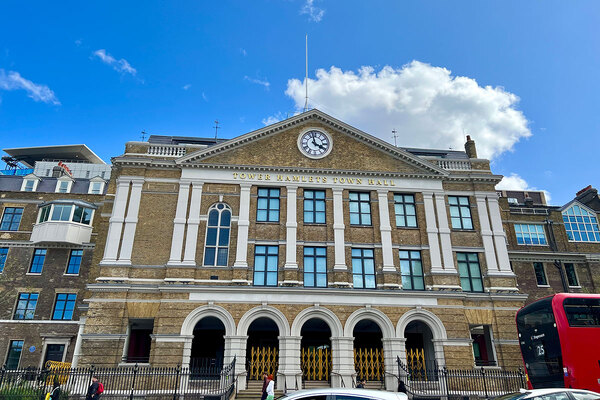Sea Mills: we visit one of the first estates to benefit from the Addison Act
When Christopher Addison sparked a housebuilding revolution 100 years ago, the Sea Mills Estate in Bristol was one of the first to benefit. Social historian John Boughton visits a place still cherished today. Photography by Jake McPherson/SWNS and Paul Townsend
Inside Housing is publishing a number of articles this month to mark the 100-year anniversary of the Addison Act, which paved the way for large-scale council housebuilding.
On 4 June 1919, Christopher Addison cut the first sod on Bristol City Council’s new Sea Mills Estate. Dr Addison, described in a local press report as “a tall man of spare figure and thoughtful demeanour”, was then the president of the Local Government Board, but was to become the first health and housing minister one month later when his flagship Housing Act received royal assent.
To commemorate the occasion, a tree was planted that today bears his name: the Addison Oak (pictured above). In his brief speech, Dr Addison expressed the hope that “the scheme would be one that not only Bristol but the nation at large would be proud of”. For his part, he could “not imagine a more glorious position than that of Sea Mills” in its bucolic rural setting close to the River Avon, four miles north-west of the city centre.
His set-piece address in Bristol came that evening and embodied the high ideals of that brief era following World War I in which prime minister David Lloyd George promised to “make Britain a fit country for heroes to live in”.
Dr Addison proclaimed: “They did not want houses built in dismal streets. Until they had houses with air about them, so long would they have to spend enormous sums annually on sickness… They wanted big production and they were prepared to pay big prices.”
“Big prices” and the high rents they entailed were to be a problem but, in the meantime, Sea Mills grew. On its completion in June 1931, it comprised some 1,279 homes.
The estate closely followed the influential ‘garden suburb’ principles of the day. It was designated a conservation area in 1981 – one of the first few council estates so protected – and the planners’ documents delineate its qualities: a detached suburb of holistic design related to local topography; street views terminated by a curve; the planned placement of houses or a feature public building; public open spaces; and, overall, “a spacious and verdant feel”.
Children now grown old on the estate remember hayfields on its perimeter, and the surrounding woods and open space where they used to play in those more relaxed times. In 1937, a young Sir John Betjeman praised Sea Mills and the “vistas of trees and fields and pleasant cottages that that magic estate has managed to create”.
Those “cottages” reflected the ideals of the 1918 Tudor Walters Report on post-war local authority housing, which had prescribed two-storey houses with front and back gardens, at no more than 12 to the acre. At Sea Mills, there were just seven per acre, almost all of which had three bedrooms. More than half had parlours – those front rooms kept “for best” by respectable working-class households of the day. A range in the living room provided for cooking and heating. A bathroom, an inside toilet and a small scullery completed the ensemble.
This may now sound delightfully old-fashioned, but Sea Mills also embraced what we might now call modern methods of construction. In an attempt to build cheaply and economically at scale, Tudor Walters recommended the standardisation of housebuilding along “the lines adopted for the manufacture of a motor car”. In Bristol, the council created a ‘demonstration area’ on its Hillfields Estate where a range of innovative designs and building forms were trialled.
Five hundred delegates of the Inter-Allied Housing and Town Planning Conference visited it in June 1920 before crossing the city to Sea Mills to view the estate’s 250 steel-framed ‘Dorlonco houses’, the first of which were completed and occupied on Sylvan Way in August 1920.
“We need to grow our council housing again so that we can actually start solving the housing crisis that we have got. The only time that we have built the sort of levels of housing that we need is when councils were building at scale”
Paul Smith, cabinet member for housing, Bristol Council
But these houses failed to deliver the promised cost savings, so traditional construction with bricks resumed. Later in the decade, concrete panel ‘Parkinson’ houses were built on the estate in a further problematic attempt to build more cheaply and quickly.
The Dorlonco houses each cost £1,150 to build (roughly £50,000 now) – around four times as much as equivalent pre-war homes. That expense, replicated across the country, led to the axeing of Dr Addison’s housing programme and his resignation in July 1921.
In Sea Mills, with empty plots but no money to build, the council leased some land to private developers. The result was St Edyth’s Road – an owner-occupied enclave in the heart of the estate that was an early form of mixed development.
The owner-occupied St Edyth’s Road, Sea Mills, in 1949
Other facilities followed more slowly. In 1920, the council’s housing extension and town planning committee had baldly stated that despite its name, it was concentrating on “housing first, then town planning”. The ‘Black Hut’ – a wooden hall relocated and repurposed from a nearby aerodrome – served as a school and church until permanent buildings were erected in 1927 and 1928 respectively. The first shops opened at around the same time, to serve a population now approaching 4,000.
Another notable absence was a pub. A covenant attached to the site had stipulated it contain no licensed premises and the ban sat comfortably with most councillors’ middle-class sensibilities and fears of working-class misbehaviour. The Progress Inn – technically just beyond the estate’s borders and one of the grand “improved” pubs of the interwar period – was opened in 1936. It is now a nursery school.
Healthier sporting interests were catered for by the large recreation ground provided by the council. However, the most popular adult pastime was gardening. The annual shows of the Sea Mills Park Horticultural Society began in 1927 and boasted more than 1,000 entries by the late 1930s.
All this betokened a respectable working-class community. A house on the estate was considered a ‘badge of honour’. Should standards slip, the housing department regularly inspected homes and gardens; residents even recall officials checking the heights of the ubiquitous privet hedges with a measuring stick.
Many local men were employed at the nearby Avonmouth docks. Their new homes required stable employment and decent wages, as Sea Mills’ rents were the highest in the city, reaching 15s a week (roughly £50 in today’s money) by the late 1930s.
St Edyth’s Road today
The protests in 1928 of the newly formed tenants association were countered by the explanation that Whitehall’s rules meant housing scheme costs were ringfenced and those in Sea Mills were exceptionally high, reflecting the quality of its housing and the “big prices” of its construction.
High rents and the relatively affluent working-class community that could afford them were a feature of much early council housing. But by 1930, thoughts were turning nationally to legislation to rehouse the slum population. A sociological survey of the late 1930s in Bristol records the discomfort that established tenants felt at this incursion of new neighbours they deemed uncouth.
At Sea Mills, there was no new housing built after 1931 and the societal shifts taking place on other city estates did not disturb the existing community. There were still grumbles about those high rents and the costs of travelling to work, while mist and damp from the river were said to aggravate those suffering from bronchial trouble. A few residents moved out, sometimes to buy their own homes. But generally, there were few complaints about the council houses they left: they were “champion”, according to one respondent to the survey.
Bristol lost around 89,000 homes to the Blitz, but Sea Mills survived World War II largely unscathed – although older residents remember Anderson bomb shelters built for groups of neighbours and a larger underground shelter in the central square. Some of the 2,700 prefab bungalows provided to meet the immediate housing crisis in Bristol were erected around the edges of the estate. Designed to serve 10 years, the last was demolished in 2014.
That 1930s survey lamented “the shortage of facilities for social intercourse and recreation” on Bristol’s new council suburbs; the grand post-war ideal was the ‘neighbourhood unit’, which would foster the community spirit apparently lacking.
What next for council housing in Bristol?
“The new wave of council housing has started – and we need to tell the story of why it is important.”
Paul Smith, cabinet member for housing at Bristol Council, is a huge believer in the need for a new generation of council housing. The council currently has 13 sites lined up, on which it is planning to build 1,000 council homes, he told delegates at the Housing 2019 conference at the end of June.
A significant programme of work is planned in the city to promote the 100th anniversary of the Addison Act, including books focusing on three estates built immediately after 1919, walking tours of estates and a cartoon history of council housing.
Mr Smith said he thinks it is vital for the UK to “regain the ambition” of the Addison Act. “It was about building really good, quality housing – the best housing in the country, to be provided by the state. We need to regain that.”
Mr Smith was speaking shortly after TV presenter and architect George Clarke called for 100,000 new council homes to be built a year for the next five years to mark the 100th anniversary of the Addison Act.
“I’m so pleased to be here today,” Mr Smith added. “Because we want to be part of a national campaign to say council housing and council tenants are really, really important to this country and they mustn’t be ignored.
“We need to grow our council housing again so that we can actually start solving the housing crisis that we have got. The only time that we have built the sort of levels of housing that we need is when councils were building at scale.”
But Sea Mills was largely complete by then and the Sea Mills Community Association, founded in September 1945, was a grassroots initiative. Its long campaign to build a community centre – estate households were invited to buy £1 shares in the project – eventually yielded fruit in 1960. The centre’s construction took five years and was carried out at weekends by residents with construction skills or who were prepared to contribute unskilled labour.
Sea Mills remained a stable though ageing community. Broader social changes had their impact; Stan Tozer, who has lived on the estate for 92 years, notes a decline of “that obvious communication between neighbours of the 1930s and 1940s”. A local historian comments more prosaically on a change in allocations policy: “Only in recent egalitarian decades did the council try housing problem families at Sea Mills, in the hope that respectability would rub off. Instead, it caused problems for the neighbours.”
This cafe was once a toilet block
Right to Buy has naturally had an impact. Around 50% of the council homes on the estate have been lost to Right to Buy. Many of the houses, subsequently sold on, are now occupied by young professionals.
By the 1980s, the construction flaws of the Parkinson and Dorlonco houses were becoming increasingly obvious. Some Parkinson homes were demolished and rebuilt in the 1990s. Renovation of the Dorlonco homes was undertaken in the 2000s.
But council plans to demolish the remaining Parkinson homes and rebuild at greater density sparked protests, initially led by Tim Wallis, an architect living on St Edyth’s Road concerned by the environmental impact.
However, fearful of relocation, the tenants rapidly took the lead in what became a genuine community movement – Mr Wallis admits that their “handwritten sheets” draped over hedges were far more effective than his own modest posters.
The first properties were built on Sylvan Way with steel frames
A “huge meeting” followed and the homes were eventually rebuilt in keeping with the estate’s history. Mr Wallis says this was a significant moment in the revival of Sea Mills’ sense of community.
This revival brought about the Sea Mills Community Initiatives, founded by local churches in 2009. Its major project to date has been to purchase and convert a former toilet block on the central square into a now flourishing community cafe. A community garden has followed.
Fittingly, the centenary of Lord Addison’s visit has provided an opportunity to celebrate Sea Mills and spark a revival of council housing across Bristol. The city has lined up 13 sites on which 1,000 homes are planned. Meanwhile, Sea Mills 100 has organised an extensive programme of community events including a mini-museum.
All this speaks to an estate that has stood the test of time and fulfilled many of its founding ideals. As Mr Tozer says: “Housing estates are tarred with being disorderly and not very friendly places, but I think Sea Mills has been an exception to that.”
100 Years of Council Housing: what Inside Housing is doing
One hundred years ago, a piece of legislation led to the birth of council housing. Gavriel Hollander introduces Inside Housing’s celebration of the centenary of the Addison Act.
It is so ingrained in our national consciousness that it is hard to imagine just how radical the idea of local authority built and funded housing must have seemed a century ago. Before World War I, almost all housing in the UK was built by private developers (albeit with some notable municipal exceptions in major cities). Given this, it is unsurprising that both quality and consistency of delivery were variable.
The post-war introduction of subsidies for councils to solve the blight of slum estates was supposed to right a wrong and – in the words of then-prime minister David Lloyd George – provide “homes fit for heroes”.
The so-called Addison Act – the very first housing act passed in this country, named after its sponsor Dr (later Lord) Christopher Addison – received royal assent exactly 100 years ago this month.
It may never have achieved its aspiration of delivering 500,000 homes (something that may sound familiar to modern-day watchers of government housing policy) but it was the start of a movement.
New estates began to crop up across the country, built in accordance with recommendations from the Tudor Walters Report, which was produced to parliament in November 1918. This built on the ‘Garden City Principles’ and suggested a number of improvements to the standard of public housing. These included limiting the length of terraced-housing blocks, mandating a minimum number of rooms and providing indoor bathrooms.
“The post-war introduction of subsidies for councils to solve the blight of slum estates was supposed to right a wrong and – in the words of the prime minister David Lloyd George – provide ‘homes fit for heroes’”
Although the abandonment of subsidy in 1921 and a change of government the following year curtailed the immediate growth of council-built housing, the seed had been sown.
This month Inside Housing celebrates the centenary of the Addison Act with a month-long series of articles looking at how it transformed the social fabric of the country and created the housing sector we know today.
Over the course of this month, we visit four estates, each symbolising a different era of council housebuilding. We also take a look at whether new-found financial freedom for local authorities could be the catalyst for a new generation of estates.
To kick off the series, acclaimed social historian John Boughton visits one of the first estates made possible by Lord Addison’s historic legislation: Sea Mills in Bristol. We then travel to Stevenage to look at how the damage to Britain’s inner cities during the Blitz led to the new town movement and a fresh wave of estates through the 1950s and 1960s.
Martin Hilditch, editor of Inside Housing, takes a trip to Hulme in Manchester to examine how the private and public sector had to work together in the 1980s to deliver a regeneration project, which is still thriving more than 30 years later.
Finally, we go to Nottingham and look at one council with grand ambitions to provide housing to a new generation of tenants.
There may still be myriad challenges to face when it comes to providing good-quality, genuinely affordable housing for those most in need, but without the passing of an act of parliament 100 years ago, the sector we work in today may never have come to exist. That alone is worth celebrating.
To read more about the act, go to: www.insidehousing.co.uk/AddisonAct
100 Years of Council Housing: we want to hear from you
To mark the 100th anniversary of the act receiving Royal Assent in July, we have a month of special activities planned, including interviews with senior council housing figures, exclusive debate and comment, and investigations into what local authorities, past and present, are doing to help provide housing.
This will signal the start of a stronger focus on local authority housing issues over the coming months on www.insidehousing.co.uk and in our weekly print and digital editions.
We want to hear from you about your local authority is doing to mark the Addison Act and about the housing issues in your area, email: editorial@insidehousing.co.uk
Sign up to receive the latest housing news straight to your inbox through our exclusive Council Focus bulletin
If you are already a subscriber click here to manage your newsletter sign-ups
Click here to read more about our activity to mark the Addison Act
More on the Addison Act
How George Clarke is aiming to end the housing crisis with his new TV show Architect George Clarke has long been a passionate campaigner for more – and better – council housing. As Inside Housing celebrates 100 years of the Addison Act, Martin Hilditch meets a man on a mission
100 Years of Council Housing: your tweets from week three Our favourite #100yearsofcouncilhousing tweets from the past seven days as our Addison Act activity moves into its fourth week
Nottingham's new wave Robyn Wilson goes to Nottingham to see what the next generation of council homes are set to look like.
If we’re going to have another 100 years of council housing, Right to Buy has to go The Right to Buy is having a devastating effect on the availability of council housing in this country and must be scrapped, writes Lee Sugden
What next for council housing? To celebrate the centenary of the Addison Act, Inside Housing asks a group of housing experts what can be learned from its legacy (sponsored)
Thatcher's legacy: a brief history of the Right to Buy An engine for social change or a handbrake on council development? We look at why the Right to Buy is as divisive as ever #ukhousing
A history of council housing: a timeline From the Addison Act to prefabs, slum clearance and the Right to Buy, council housing in the United Kingdom has a long and colourful history. Carl Brown looks at how it has evolved over time
Council housing: the key to a more equitable and dynamic society As the 100th anniversary of the Addison Act approaches, we publish an abridged extract of a book by Chris Matthews chronicling the history of council housing in Nottingham
Addison’s framework was scrapped but its legacy is more important than ever The fortunes of council housing have ebbed and flowed ever since Addison’s programme was abruptly halted in 1921, writes Jules Birch
Hulme: the redevelopment project that changed regeneration The redevelopment of Hulme in Manchester kick-started a new approach to regeneration in the UK – and the careers of some of housing’s best-known figures. Martin Hilditch joins them on a step back in time with lessons for today.
100 Years of Council Housing: your tweets from week two We pick our favourite #100yearsofcouncil housing tweets over the past week
Memories of council housing: the human legacy of the Addison Act As the centenary of the first council houses approaches, Peter Apps hears from some of the people who have lived in them in the decades since
Many of the sector’s current leaders began their journeys in council teams One hundred years of council housing has delivered a generation of sector leaders as well as millions of council homes, writes Mervyn Jones
Stevenage: home of the new town revolution Stevenage was the first of the post-war ‘new towns’. Gavriel Hollander visits the town to see how it has changed.
100 Years of Council Housing: your tweets from week one Inside Housing has been encouraging councils to say what they are doing to build homes and to mark 100 years of council housing. Here we feature a selection of your tweets
Kit Malthouse: 'Council housing is coming back with a vengeance' Housing minister Kit Malthouse tells Martin Hilditch why growing numbers of councils are looking to get back into development
Sea Mills: we visit one of the first estates to benefit from the Addison Act Social historian John Boughton visits a place in Bristol still cherished today
The Housing Podcast: is council housebuilding about to make a comeback Nearly 100 years after the introduction of the Addison Act, which kick-started the building of the first council estates in the UK, the Housing Podcast team examines the state of council housebuilding today
Why the 100th anniversary of the Addison Act should spark a council housing comeback Let’s make 2019 the start of a renaissance of council housing, writes Martin Hilditch
Are new borrowing freedoms sparking a revival of council housebuilding? The Addison Act marked the birth of council housebuilding. A century later, could recent financial freedom spark a renaissance? Nathaniel Barker investigates.
How Cornwall is taking inspiration from Christopher Addison Cornwall Council is one of many keeping the legacy alive, writes Kate Kennally.
The Addison Act - celebrating 100 years of council housing This year marks the 100th anniversary of the Addison Act – which paved the way for council housebuilding on a large scale. Inside Housing has a whole month of special activity planned and we want to hear your stories
The 100-year anniversary of the Addison Act means it’s time to talk about council housing Let’s use the 100th anniversary of council housing as we know it to flag up some of the great work that’s been done – and kick-start a conversation about the future, writes Martin Hilditch
London must recapture the housebuilding ambition of the Addison Act Councils are committed to development but are still facing unfair restrictions, writes Darren Rodwell of London Councils
Marking 100 years since the ‘Addison Act’ Professor Mark Swenarton writes about the Homes Fit for Heroes Centenary Conference
More council news
Council tenants on Universal Credit 16 times more likely to abandon tenancies
Council to claw back 260 Right to Buy homes
Local authorities accuse government of ‘sleight of hand’ over post-Hackitt regulation
Partner with housing associations to use borrowing freedoms, says LGA chair
Bristol City Council signs off partnership with L&G for 500-home scheme
Council boss warns against local authority ‘can't do’ attitude towards housebuilding
Right to Buy sales plummet 23%
Supreme Court rules against Birmingham Council in homelessness case
A bed every night: has Manchester's mayor succeeded in helping every rough sleeper in the city?
Council housing company to offer Rent to Buy
Council-owned regeneration company to build 500 homes
How has Haringey Council moved on from its development vehicle fight?
Liverpool to open HRA to build new council homes for first time in 30 years
How can London councils build more homes?
Birmingham Council’s housing company to build 2,708 homes by 2029
How are councils are using pension funds to build homes
